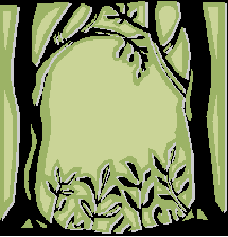



WATERPLANTS
|
Water plants play a very important role in the
Amazon ecosystem. Many animals depend on this kind of plant. Their roots
shelter small fishes, amphibians and crustaceans. Only a few species are
very common in the Amazon Rainforest, but there is a good variety of water
plant species. These few species are very important foe the forest, but more
important foe the river. The water hyacinth and water lettuce are the most
common species ("Water plants"). When the manatee is absent, there can be
overpopulation of hyacint and water lettuce. This situation can result in
the block of water ways. When there is heavy flood, plants are broken and
they float on the water, disturbing many animals and making them go to different
places.
Algae Algae are phototrophic microorganisms; this means that they need light to flourish. They can be found as multicellular or unicellular organisms. ("Microbiology") The most common group is known as Green Algae (Chlorophyta). The sugars synthetized with the help of the two types of chlorophyll are the main source of energy for the algae which uses them to grow and reproduce. They can exist as single cells, filaments, colonies and in multicellular form. We can also find Red Algae (Rhodphyta) and Brown Algae (Phaeophyta). They are protist and can reach large sizes. For example the brown algae Bladderwrack can grow to the size of a house plant. Groups of bacteria such as chromista, rhodophyta and photosynthetic are include in green algae species. |

1. 2. |

3.
|
Floating meadows: This plant helps to create diversification. During floods they are moved by the river, and they move little organisms with them. They are then left in new locations where they flourish. This process ends up in ecological isolation and thus, in diversification |

4.
|
Water Hyacinth Size: from a few centimeters to over a meter of
height. ("Hyacinth")
Leafs: can reach up to 20 cm long and 15 cm wide. (Hyacinth") They can live in lakes, rivers, ponds, ditches and even backwater areas. They take their nutrients directly from water sources. Their method of reproduction is sexually and vegetatively. Their seeds are able to germinate in 18 days or they can also remain inactive for 20 years. They remain inactive during periods of stress and when there are floods seeds germinate. They provide shelter to insects, but they also tend to be very invasive. |
|
Home
|
Index
|
Preservation
|
|
Goals
|
Characterization |
Time plan |
|
FAQ's |
Monitoring |
Members |
|
Presentation |
Minutes |
Introduction
|